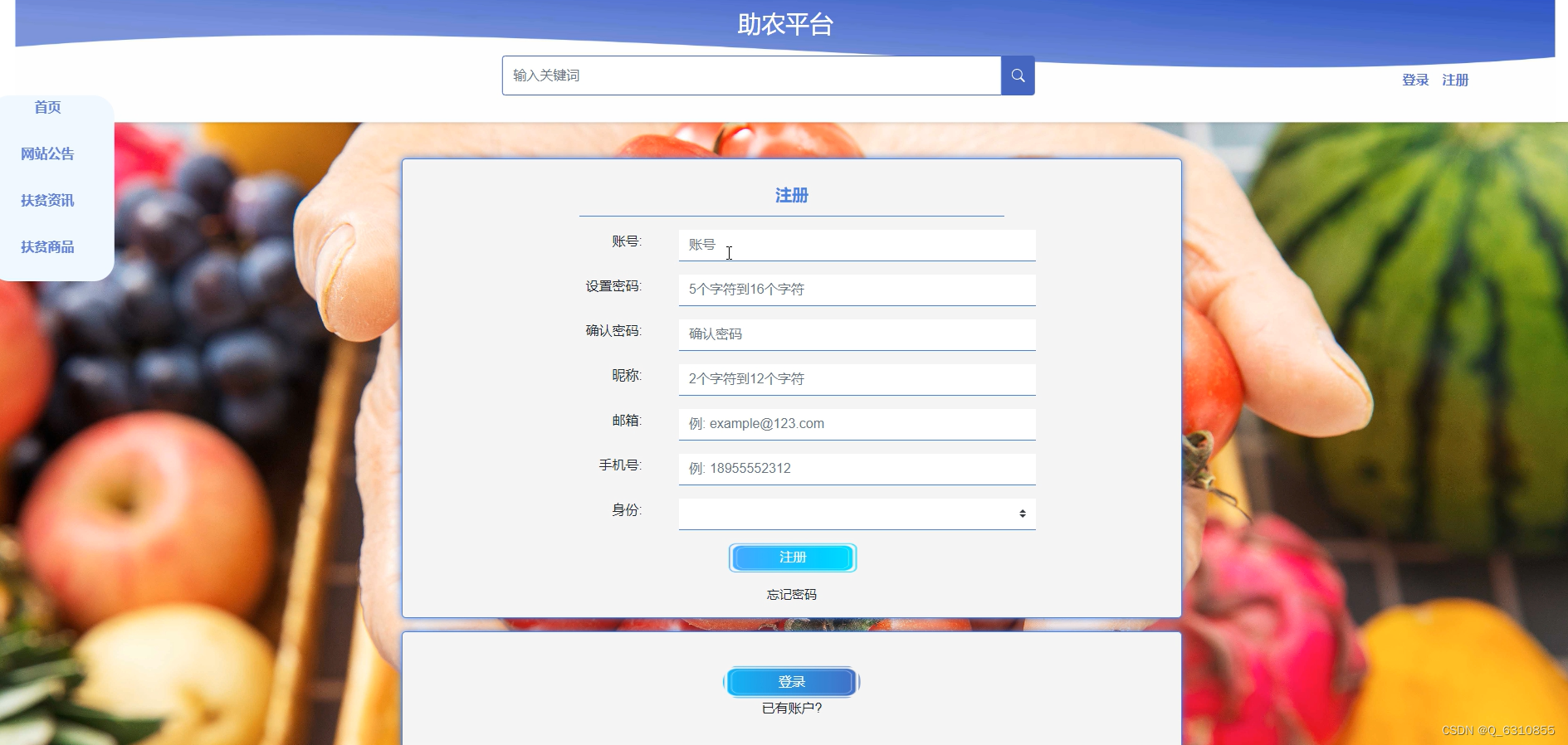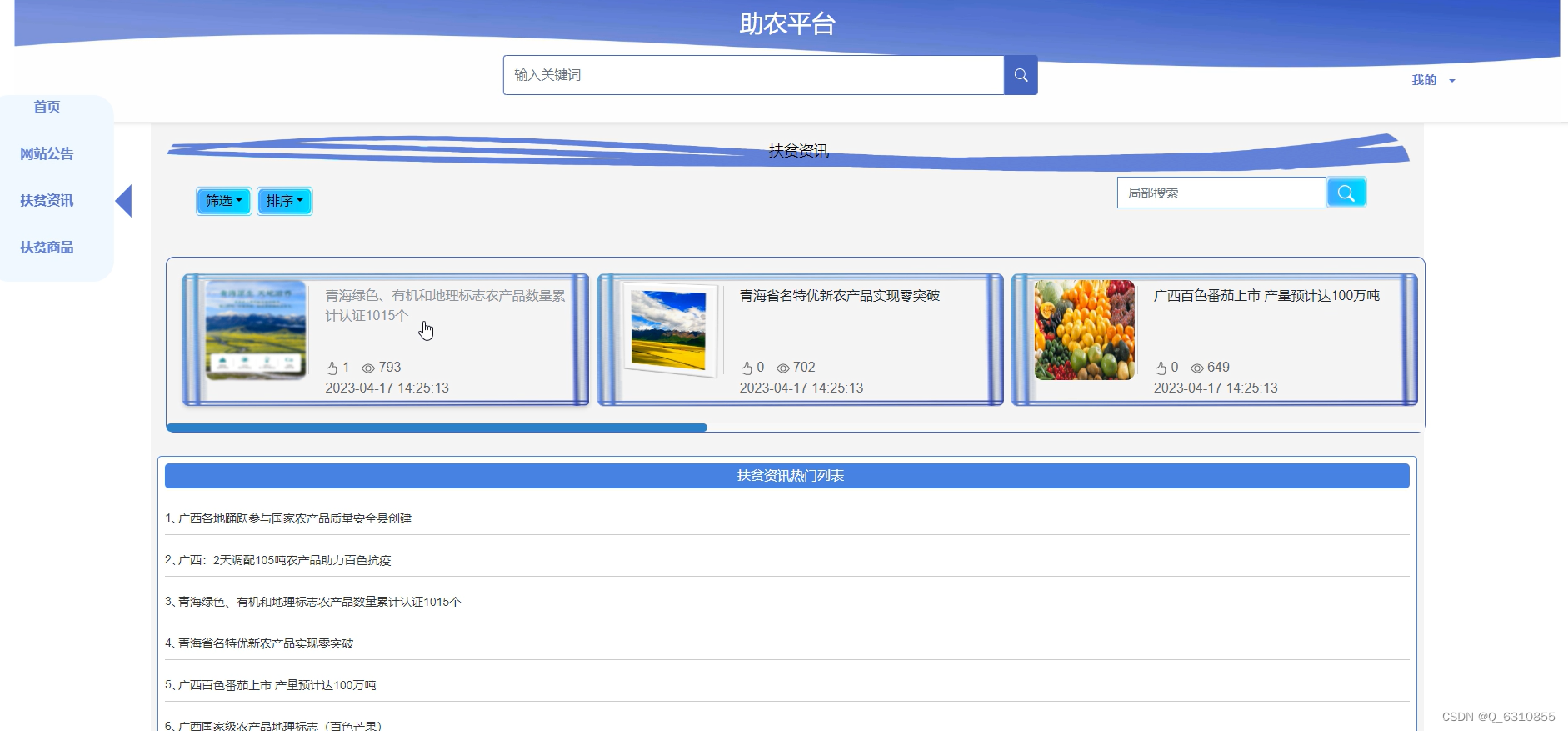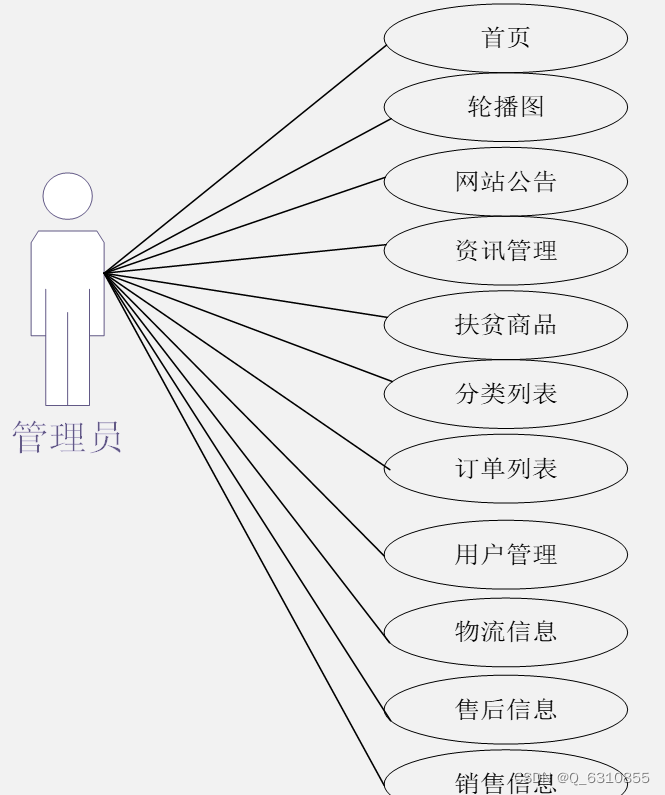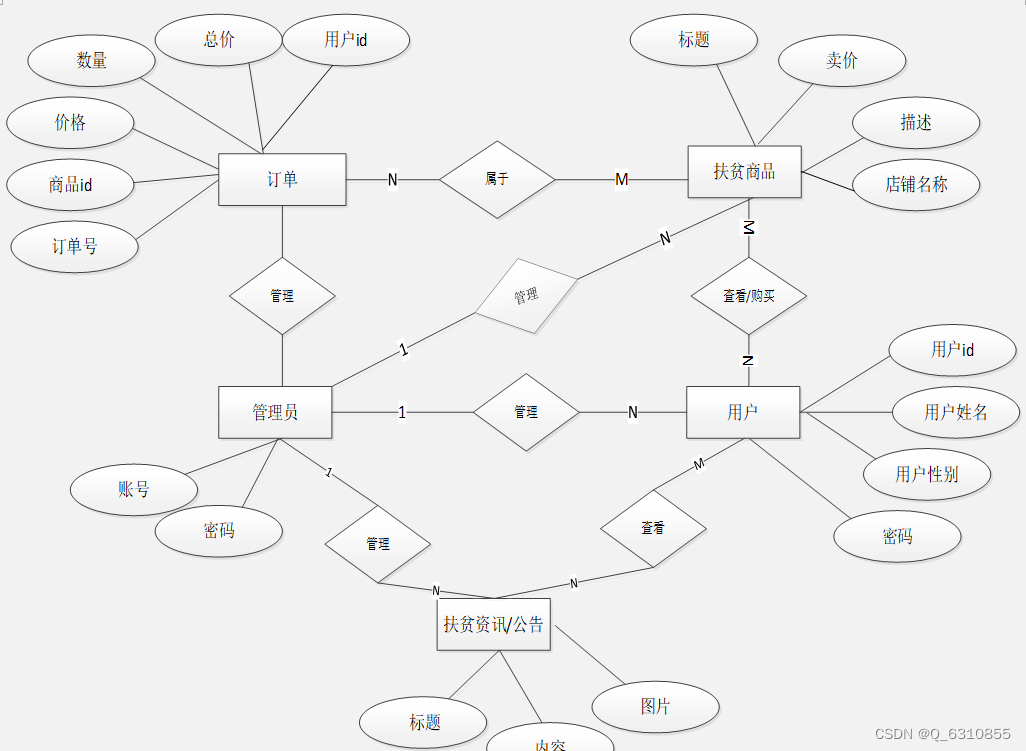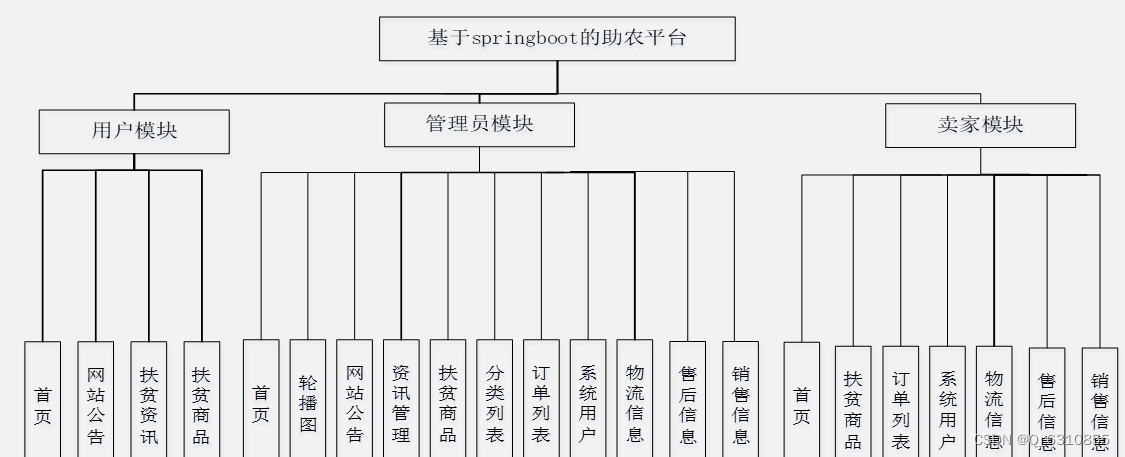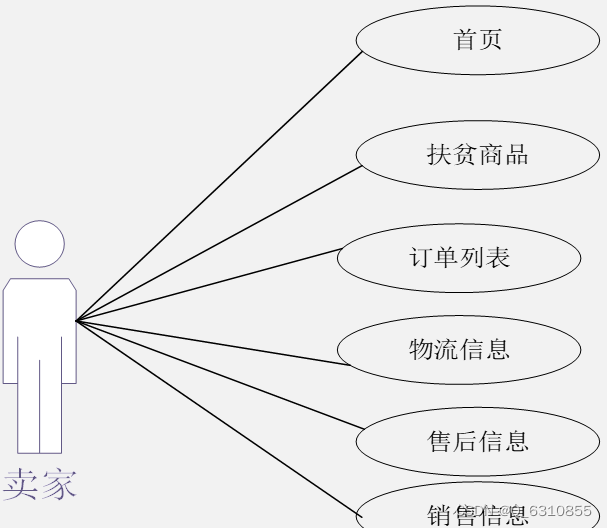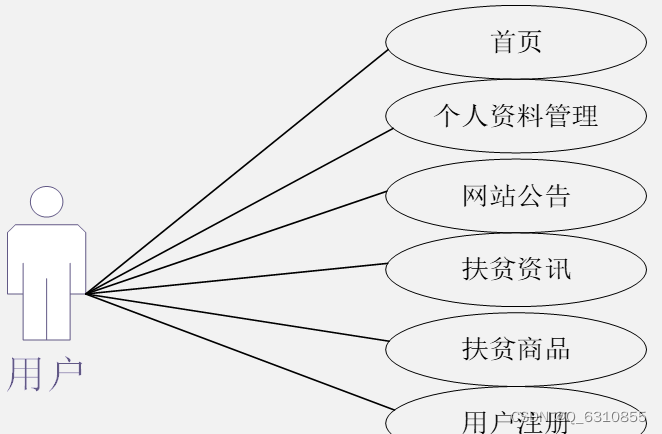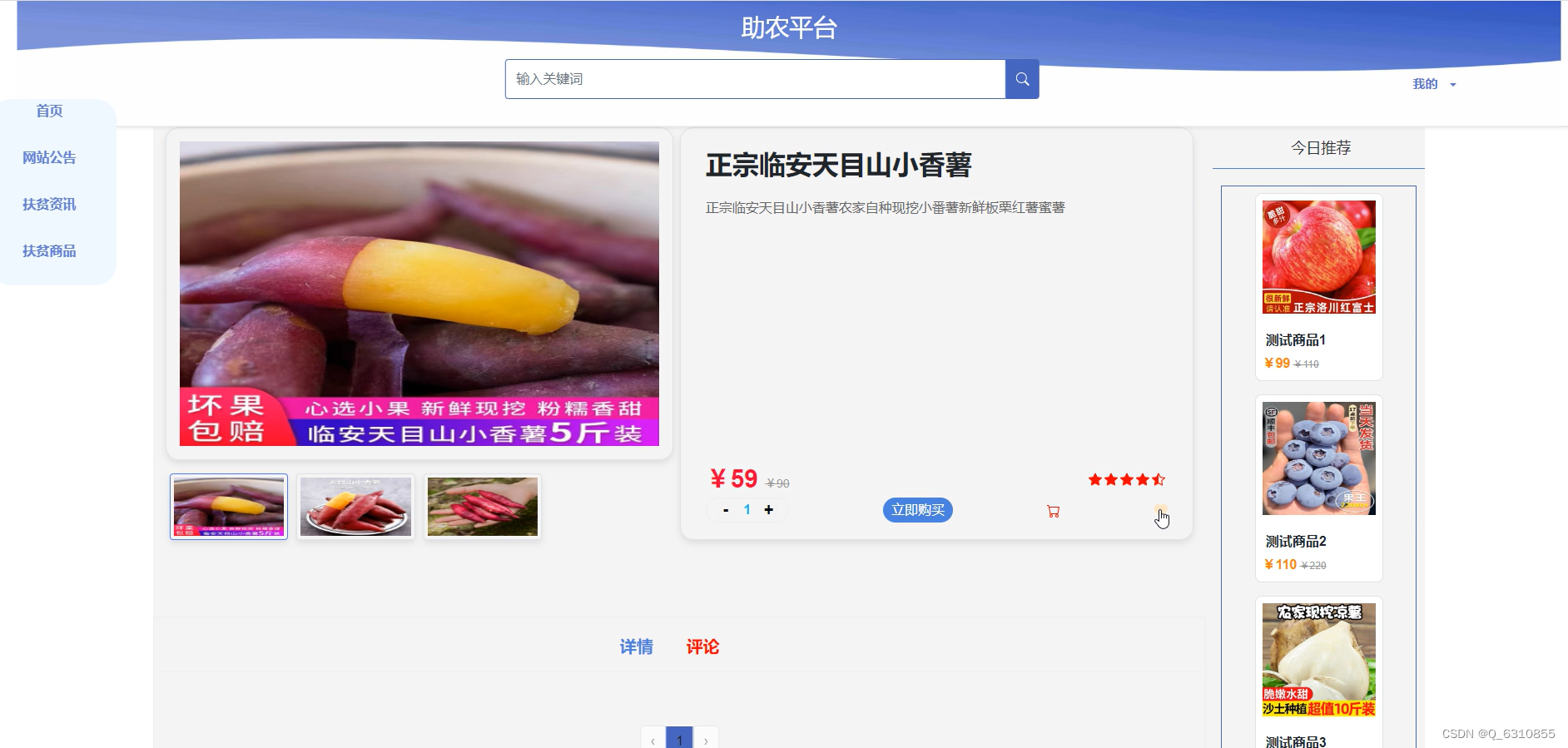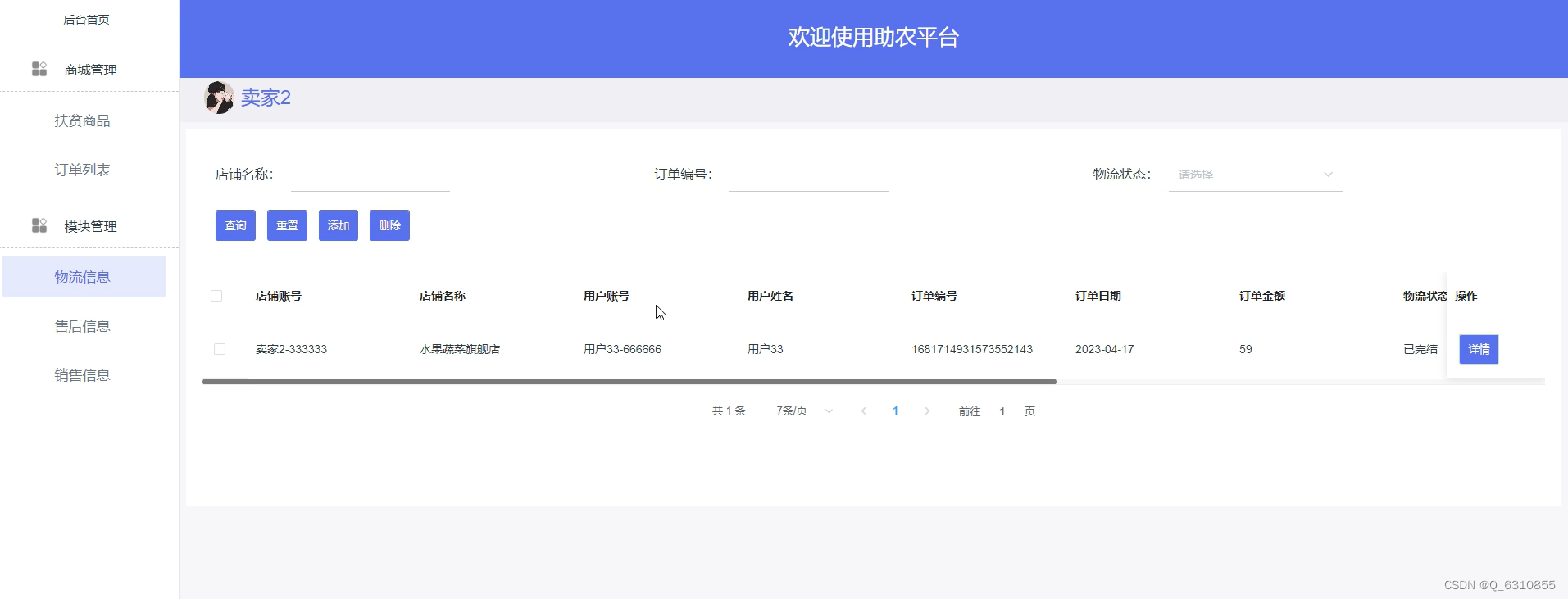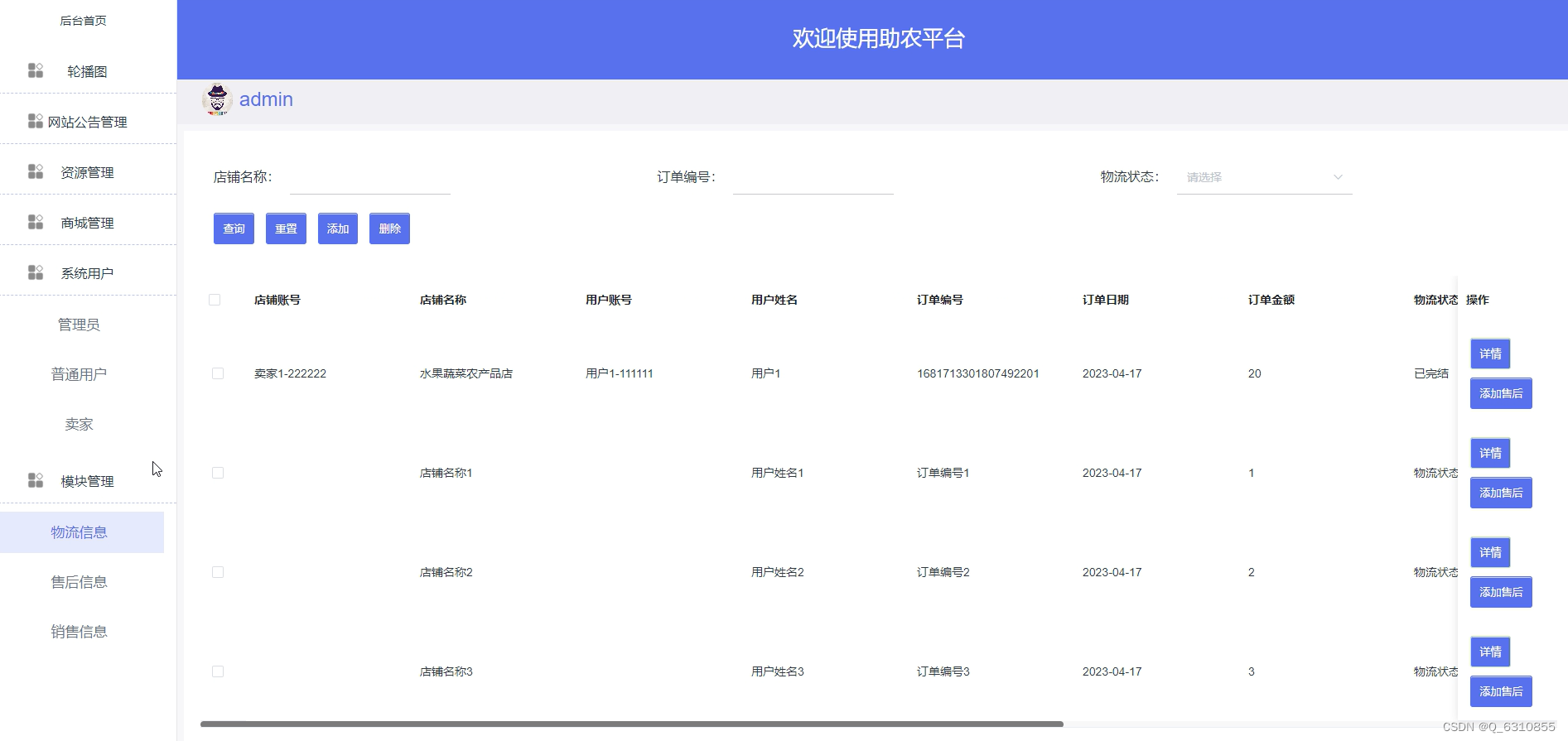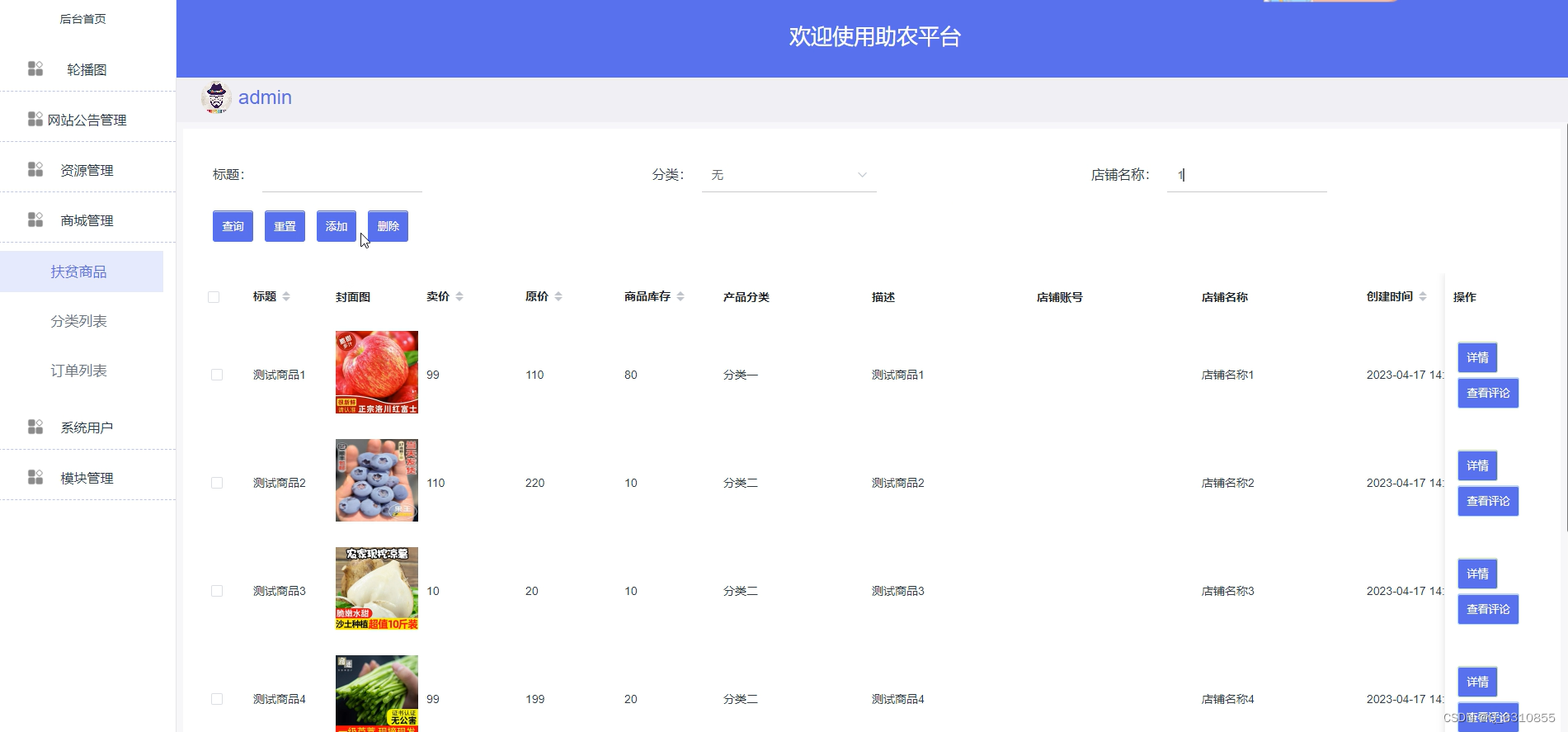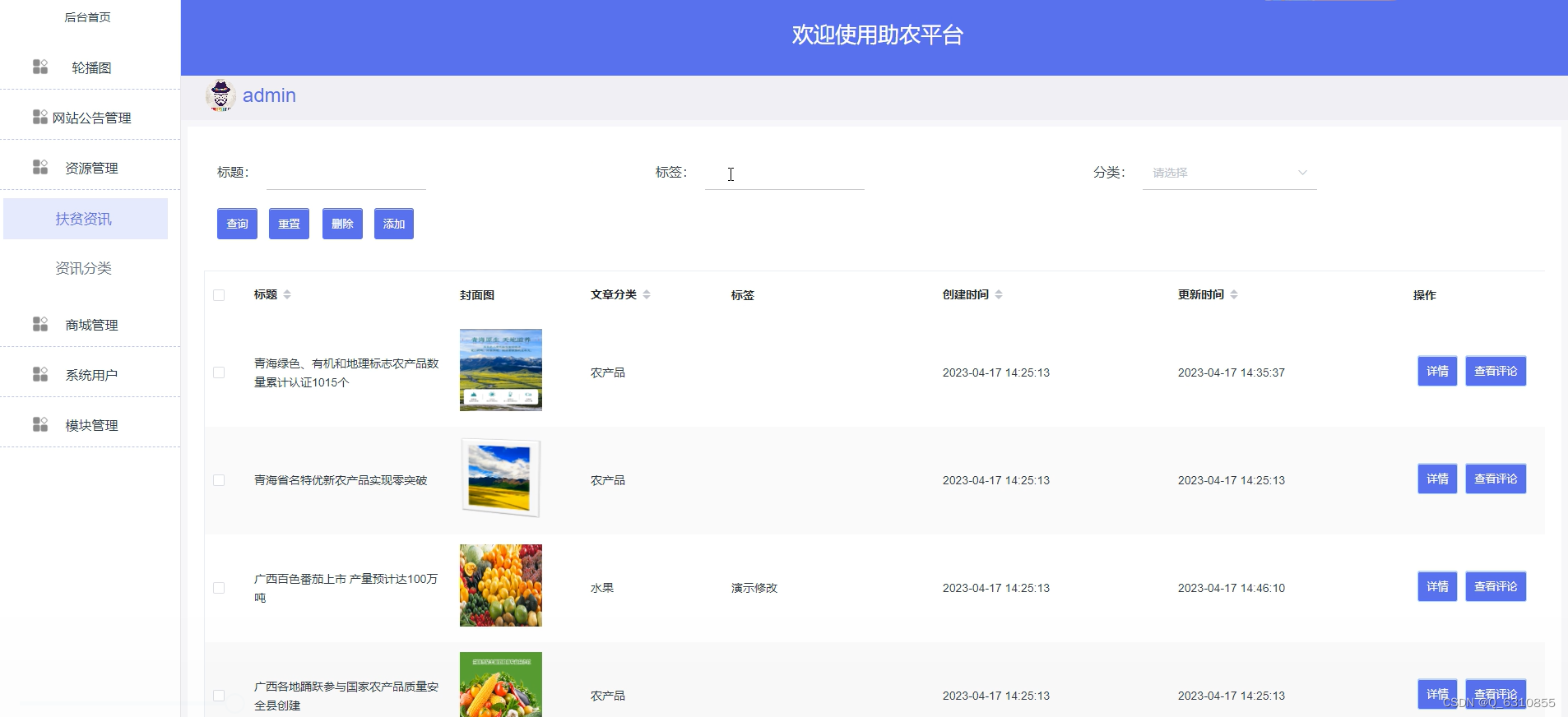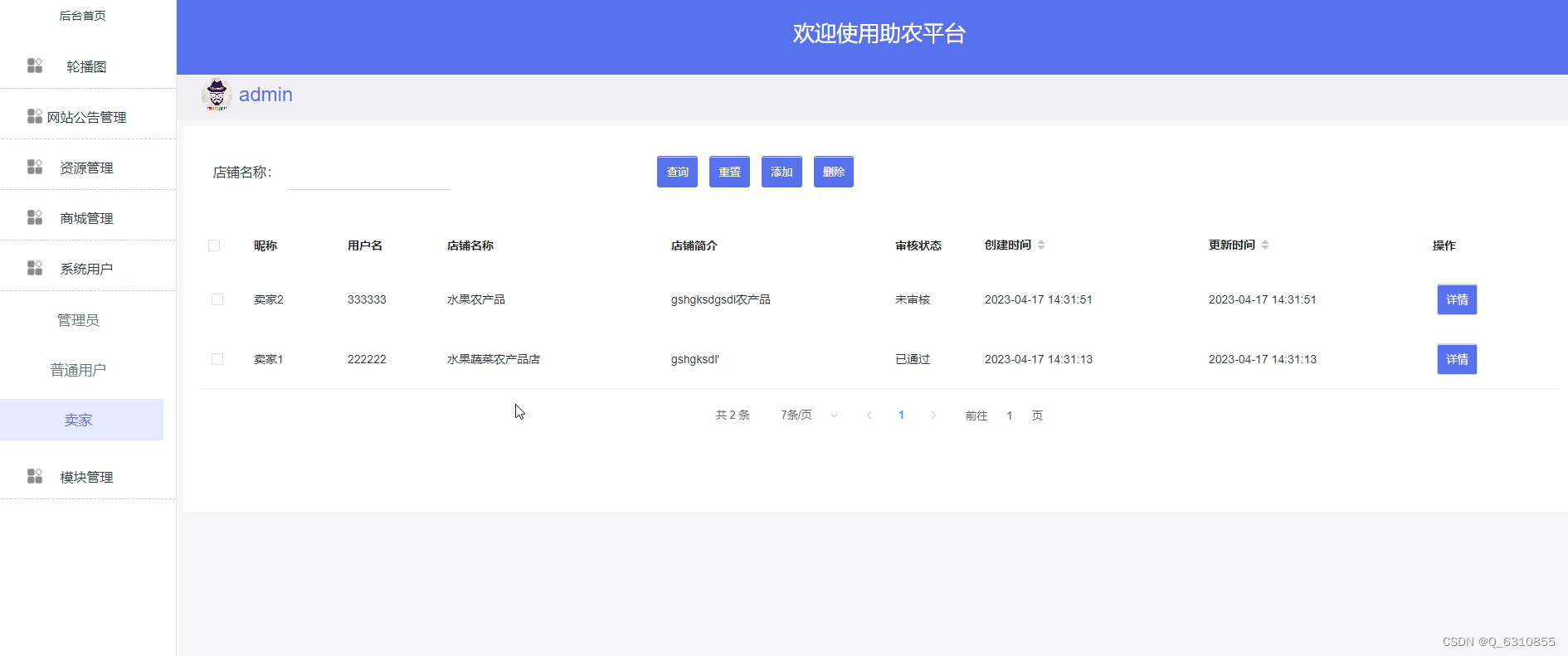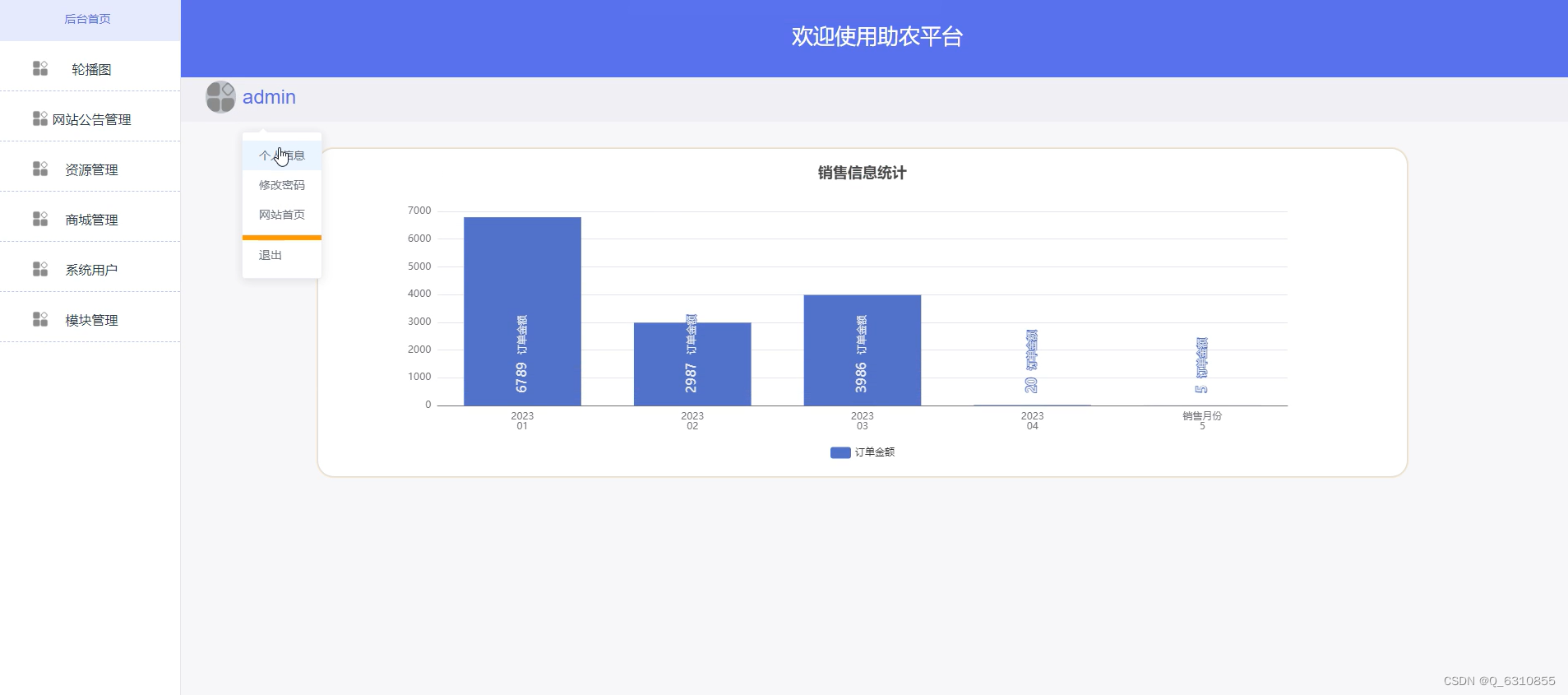文末获取资源,收藏关注不迷路
项目介绍
随着互联网不断升温,用户的需求也越来越大,为此设计助农平台可以方便用户随时获取到爱心助农信息,通过这一软件来满足用户的要求,并且使用助农平台可以更快捷、更高效的提高爱心助农信息管理的工作效率,是一款必不可少的管理系统。 开发助农平台进行管理,就要运用软件工程的方法来解决这个软件开发中遇到的各个问题。
系统管理也都将通过计算机进行整体智能化操作,对于助农平台的信息管理所牵扯的信息管理及数据保存都是非常多的,举例像所有的管理员:首页、轮播图、网站公告、资源管理;扶贫资讯、资讯分类;商城管理;扶贫商品、分类列表、订单列表;系统用户;管理员、普通用户、卖家;模块管理;物流信息、售后信息、销售信息;等,这给管理者的工作带来了巨大的挑战,所以为此开发了本助农平台,为用户提供助农平台平台,方便管理员及时高效的管理所有的信息,给用户提供简单方便快捷的方式,并且数据准确,用户可以足不出户就可以对助农平台相关信息进行管理,统计查询等操作,而且还能节省用户查询信息的等待时间,所以开发助农平台给工作人员带来很大的方便,可以大大的提高系统人用户作效率。
技术介绍
1、管理员账号:abo 密码:abo
2、开发环境为Eclipse/idea,数据库为mysql 使用java语言开发。
3.配置好Tomcat并点击启动按钮即可运行
4.数据库连接src\main\resources\application.yml中修改
5.maven包版本apache-maven-3.3.9.
开发语言:Java
框架:SSM
前端框架:vue.js
JDK版本:JDK1.8+
服务器:tomcat8+
数据库工具:Navicat
开发软件:idea 支持eclipse
支持定做:Java/PHP/Python/Android/小程序/Vue/爬虫/C#/Asp.net
Springboot是当前最流向的一个框架,它的配置更加的简单,使开发变得更加的简单迅速。
Springboot的基础结构共三个文件,具体如下:
src/main/java:程序开发以及主程序入口;
src/main/resources:配置文件;
src/test/java:测试程序。
ssm的数据库配置默认支持两种格式的配置文件
1,application.properties
2,application.yaml
项目界面
系统功能模块
该系统的基本功能包括管理员、用户、卖家三个权限角色功能模块。
对于管理员可以使用的功能模块主要有首页、轮播图、网站公告、资源管理;扶贫资讯、资讯分类;商城管理;扶贫商品、分类列表、订单列表;系统用户;管理员、普通用户、卖家;模块管理;物流信息、售后信息、销售信息;管理等功能。
对于用户所使用的功能模块的操作主要是首页、网站公告、扶贫资讯、扶贫商品等功能。
对于卖家所使用的功能模块的操作主要是首页、扶贫商品、订单列表、模块管理;物流信息、售后信息、销售信息;等功能。
关键代码
package com.controller;
import java.util.Arrays;
import java.util.Calendar;
import java.util.Date;
import java.util.Map;
import javax.servlet.http.HttpServletRequest;
import org.springframework.beans.factory.annotation.Autowired;
import org.springframework.stereotype.Controller;
import org.springframework.web.bind.annotation.GetMapping;
import org.springframework.web.bind.annotation.PathVariable;
import org.springframework.web.bind.annotation.PostMapping;
import org.springframework.web.bind.annotation.RequestBody;
import org.springframework.web.bind.annotation.RequestMapping;
import org.springframework.web.bind.annotation.RequestParam;
import org.springframework.web.bind.annotation.ResponseBody;
import org.springframework.web.bind.annotation.RestController;
import com.annotation.IgnoreAuth;
import com.baomidou.mybatisplus.mapper.EntityWrapper;
import com.entity.TokenEntity;
import com.entity.UserEntity;
import com.service.TokenService;
import com.service.UserService;
import com.utils.CommonUtil;
import com.utils.MPUtil;
import com.utils.PageUtils;
import com.utils.R;
import com.utils.ValidatorUtils;
/**
* 登录相关
*/
@RequestMapping("users")
@RestController
public class UserController{
@Autowired
private UserService userService;
@Autowired
private TokenService tokenService;
/**
* 登录
*/
@IgnoreAuth
@PostMapping(value = "/login")
public R login(String username, String password, String captcha, HttpServletRequest request) {
UserEntity user = userService.selectOne(new EntityWrapper<UserEntity>().eq("username", username));
if(user==null || !user.getPassword().equals(password)) {
return R.error("账号或密码不正确");
}
String token = tokenService.generateToken(user.getId(),username, "users", user.getRole());
return R.ok().put("token", token);
}
/**
* 注册
*/
@IgnoreAuth
@PostMapping(value = "/register")
public R register(@RequestBody UserEntity user){
// ValidatorUtils.validateEntity(user);
if(userService.selectOne(new EntityWrapper<UserEntity>().eq("username", user.getUsername())) !=null) {
return R.error("用户已存在");
}
userService.insert(user);
return R.ok();
}
/**
* 退出
*/
@GetMapping(value = "logout")
public R logout(HttpServletRequest request) {
request.getSession().invalidate();
return R.ok("退出成功");
}
/**
* 密码重置
*/
@IgnoreAuth
@RequestMapping(value = "/resetPass")
public R resetPass(String username, HttpServletRequest request){
UserEntity user = userService.selectOne(new EntityWrapper<UserEntity>().eq("username", username));
if(user==null) {
return R.error("账号不存在");
}
user.setPassword("123456");
userService.update(user,null);
return R.ok("密码已重置为:123456");
}
/**
* 列表
*/
@RequestMapping("/page")
public R page(@RequestParam Map<String, Object> params,UserEntity user){
EntityWrapper<UserEntity> ew = new EntityWrapper<UserEntity>();
PageUtils page = userService.queryPage(params, MPUtil.sort(MPUtil.between(MPUtil.allLike(ew, user), params), params));
return R.ok().put("data", page);
}
/**
* 列表
*/
@RequestMapping("/list")
public R list( UserEntity user){
EntityWrapper<UserEntity> ew = new EntityWrapper<UserEntity>();
ew.allEq(MPUtil.allEQMapPre( user, "user"));
return R.ok().put("data", userService.selectListView(ew));
}
/**
* 信息
*/
@RequestMapping("/info/{id}")
public R info(@PathVariable("id") String id){
UserEntity user = userService.selectById(id);
return R.ok().put("data", user);
}
/**
* 获取用户的session用户信息
*/
@RequestMapping("/session")
public R getCurrUser(HttpServletRequest request){
Long id = (Long)request.getSession().getAttribute("userId");
UserEntity user = userService.selectById(id);
return R.ok().put("data", user);
}
/**
* 保存
*/
@PostMapping("/save")
public R save(@RequestBody UserEntity user){
// ValidatorUtils.validateEntity(user);
if(userService.selectOne(new EntityWrapper<UserEntity>().eq("username", user.getUsername())) !=null) {
return R.error("用户已存在");
}
userService.insert(user);
return R.ok();
}
/**
* 修改
*/
@RequestMapping("/update")
public R update(@RequestBody UserEntity user){
// ValidatorUtils.validateEntity(user);
UserEntity u = userService.selectOne(new EntityWrapper<UserEntity>().eq("username", user.getUsername()));
if(u!=null && u.getId()!=user.getId() && u.getUsername().equals(user.getUsername())) {
return R.error("用户名已存在。");
}
userService.updateById(user);//全部更新
return R.ok();
}
/**
* 删除
*/
@RequestMapping("/delete")
public R delete(@RequestBody Long[] ids){
userService.deleteBatchIds(Arrays.asList(ids));
return R.ok();
}
}
目录
目 录
目 录 III
1 绪论 1
1.1 研究背景 1
1.2 目的和意义 1
1.3 论文结构安排 2
2 相关技术 3
2.1 Springboot框架介绍 3
2.2 B/S结构介绍 3
2.3 Mysql数据库介绍 4
3 系统分析 6
3.1 系统可行性分析 6
3.1.1 技术可行性分析 6
3.1.2 经济可行性分析 6
3.1.3 运行可行性分析 6
3.2 系统性能分析 7
3.2.1 易用性指标 7
3.2.2 可扩展性指标 7
3.2.3 健壮性指标 7
3.2.4 安全性指标 8
3.3 系统流程分析 8
3.3.1 操作流程分析 8
3.3.2 登录流程分析 9
3.3.3 信息添加流程分析 10
3.3.4 信息删除流程分析 11
4 系统设计 12
4.1 系统概要设计 12
4.2 系统功能结构设计 12
4.3 数据库设计 13
4.3.1 数据库E-R图设计 13
4.3.2 数据库表结构设计 14
5 系统实现 17
5.1用户部分功能17
5.2 管理员部分功能展示
6 系统测试
6.1 系统测试的特点
6.2 系统功能测试
6.2.1 登录功能测试
6.2.2 添加类别功能测试
6.3 测试结果分析
结 论
致 谢
参考文献

